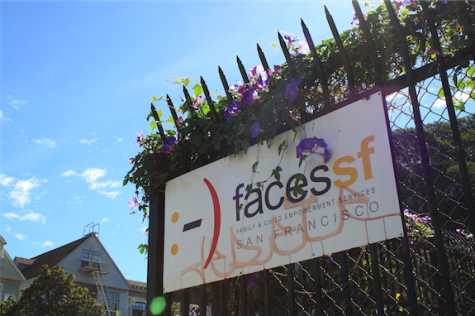Teen work with kids benefits both parties
At Urban, students have the opportunity to volunteer with a variety of organizations. The most prominent type of volunteer work at Urban is with children, both in the classroom and on the playground. According to Urban’s Director of Service Learning, Amy Argenal, students at the school have volunteered with organizations such as Faces SF, Reading Partners, Playworks, and the Boys & Girls Clubs, among others. What makes us so drawn to working with children?
Mia Carleton (‘17) volunteers at Jamestown Community Center, an organization whose mission is to “mobilize the resources of families, neighborhood residents, and other community members to help young people realize their full potential as empowered and productive members of society.”
“When I would help [young] kids with their homework at Jamestown, I would notice that a lot of them were struggling with math, like adding and subtracting,” said Carleton. “It was really exciting when I got to see them improve on something and they were really happy about it. That made me happy.”
Argenal had more to add about the impact on teens. She explained, “I think for teenagers working with young people, it’s easier to have ownership, because little kids or middle school students will go to a teenager and ask for help, and integrate them more.” Argenal brought the point that constant interaction is beneficial for not only the younger kids, but the older ones too, as it helps everyone involved build leadership and communicational skills.
Jessie Martinez, who works as a 6th Grade Math & Science teacher at Gateway Middle School, also oversees and organizes high school volunteers and their work with Gateway students. Her experience in this role has led her to understand that, “adults can be seen as out of touch or controlling, and students often have a hard time believing that we were ever their age and had to deal with what they are dealing with.” She continued, “They can much more easily imagine themselves as high school students.” Argenal and Martinez both suggest through their comments that the bonds between teens and young children are crucial, and perhaps stronger than either age’s bond with adults.
It is evident that students who choose to work in childcare are invested in their work and are making a significant impact. Argenal commented on the feedback she has received from Reading Partners, an organization that works with volunteers to help children who are reading several years behind grade level.
“[The organization] told me today that the sophomore volunteer program has had huge impacts on their Leonard R. Flynn site. They said [not only] having the volunteers regularly but the interactions that the high school students have with the elementary school… it’s unlike any of their adult volunteers,” she said.
Though many high school students volunteer with children, Argenal and Martinez both put emphasis on the idea of more involvement. “In order to get more people interested in working with children we need to place more value on those jobs [in our society],” shared Martinez.
Argenal focused more on involvement in terms of gender, and notes, “There’s a gender gap. I’m using this very loosely… it’s interesting to see that it’s definitely a lot of young women who will step into that quicker than young men when you look at the numbers… I don’t know where that comes from.”
A 2012-2013 Schools and Staffing Survey from the National Center for Education Statistics states that 76.3 percent of public school teachers are female, and only 23.7 percent are male. Perhaps more involvement in younger years, and more encouragement for all genders, would lead to increased gender equality in children’s education as adults.
It is clear that teen and child interactions are more important than we think they are. Inspiring more people to have these interactions should continue to change those who are taking part in them, as well as the world of education, for the better.












